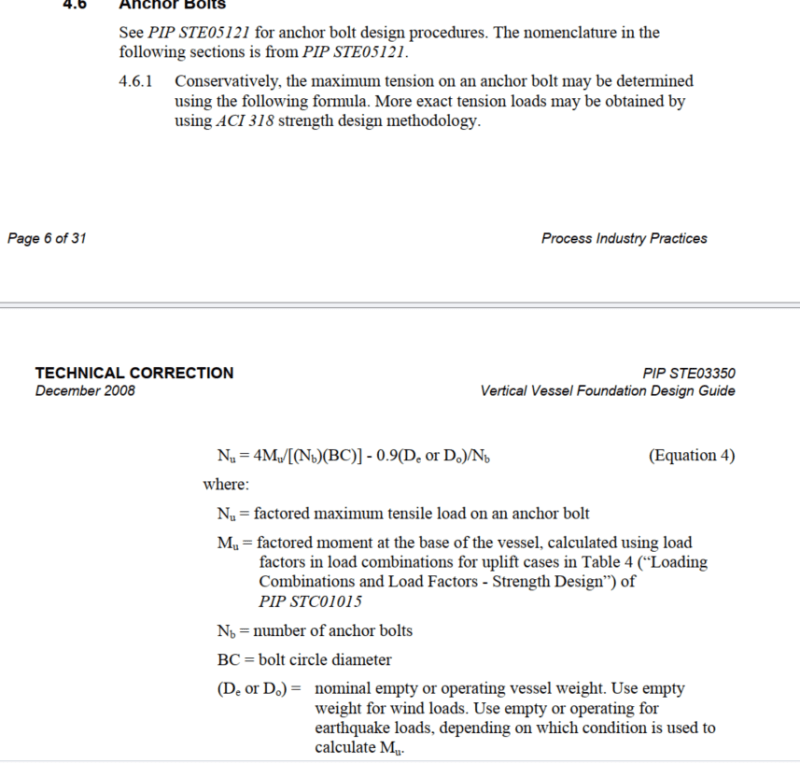Good morning Eng tippers,
For flat bottom vessels, is it safe to rely on the operating dead weight to counteract seismic overturning moments, when looking at anchor bolt tension?
I am concerned that the flexibility of the bottom plate will prevent the content dead weight from counteracting bolt tension.
PIP STE03350 has this equation for calculating anchor bolt tension, however I am unsure if it is equally applicable to flat bottom tanks as it is to skirted tanks.
Thank you.

For flat bottom vessels, is it safe to rely on the operating dead weight to counteract seismic overturning moments, when looking at anchor bolt tension?
I am concerned that the flexibility of the bottom plate will prevent the content dead weight from counteracting bolt tension.
PIP STE03350 has this equation for calculating anchor bolt tension, however I am unsure if it is equally applicable to flat bottom tanks as it is to skirted tanks.
Thank you.


